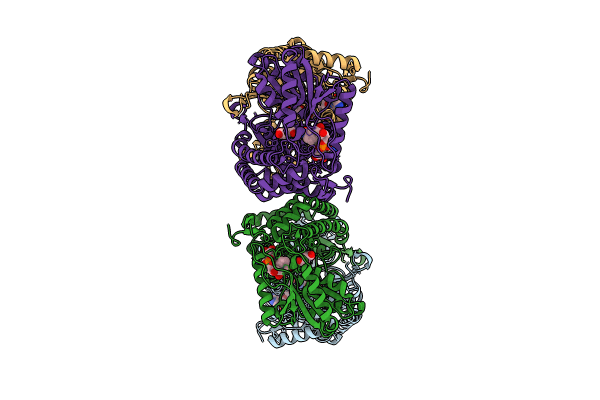
Deposition Date
2023-09-25
Release Date
2024-10-02
Last Version Date
2024-10-30
Entry Detail
PDB ID:
8QMR
Keywords:
Title:
Succinic semialdehyde dehydrogenase from E. coli with bound NAD+ and succinic semialdehyde
Biological Source:
Source Organism:
Escherichia coli K-12 (Taxon ID: 83333)
Host Organism:
Method Details:
Experimental Method:
Resolution:
2.30 Å
R-Value Free:
0.22
R-Value Work:
0.19
R-Value Observed:
0.19
Space Group:
P 21 21 21


